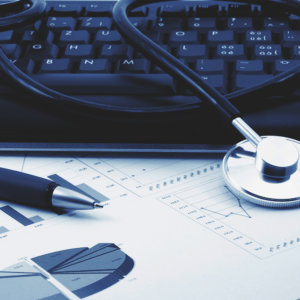Coming Soon: Doctors As Data Analysts
A healthcare system that is fully data-driven is not that far off, says Kaiser’s John Mattison.
Topics
Competing With Data & Analytics
Uber and Airbnb let you rate your driver or your stay. But many users don’t know that your driver or your host can rate you, too. Imagine if you couldn’t get an Uber driver to take you because your rating was too low.
These mutual rating systems provide an example of reciprocal transparency, and it’s coming to health care, predicts John Mattison, chief medical information officer at Kaiser Permanente. Public ratings for your doctor or nurse? Mattison says it is just one of the ways data, especially big data, will change health care. In a speech at the Big Data Innovation Summit in Boston, he ran rapid-fire through a set of the changes data will wreak on health care.
Change #1: A new data environment.
We’re comfortable with living our lives in the natural environment — but Mattison envisions a new environment is on its way for us to live in. He described something called the “plecosystem,” which is a multiplatform ecosystem for our personal data. As he explained it, people put information into the cloud, use smartphones, create social media accounts and profiles — and they increasingly have a “quantified self” through wearable data gatherers like Fitbit and Jawbone. All of these are also platforms that could be brought together to form our personal plecosystem. He also recounted the idea of the “exposome,” which is a collection of all records of our lifetime exposures — educational, artistic, media, social, health, etc. — to create a full record of both nature and nurture, driven by emerging, dense sensor networks.
Data on who we are in combination with what we’re exposed to in our lifetimes can be a pretty powerful foundation for predictive analytics. In medicine, genetic data is often used for risk assessment for chronic disease, but with exposure data layered on top, it reaches a level of precision that is currently unachievable. Mattison says data from the plecosystem will become part of how health care happens, especially as the price of sequencing genomes continues to fall below today’s $1,000 level. “The cost of sequencing the genome is declining faster than Moore’s Law,” Mattison said.


Comments (2)
Job Too
ANGELA I LIN